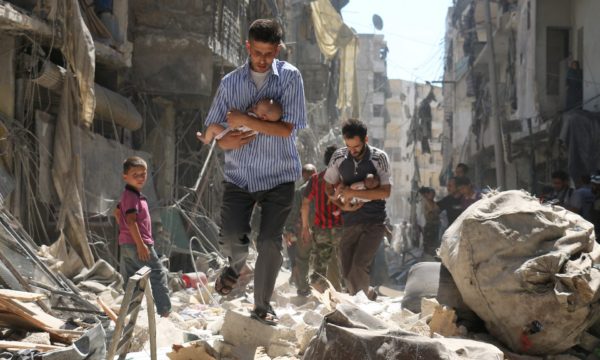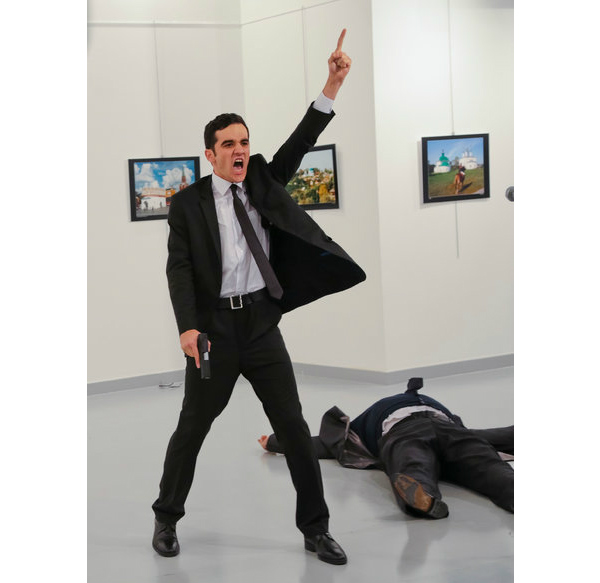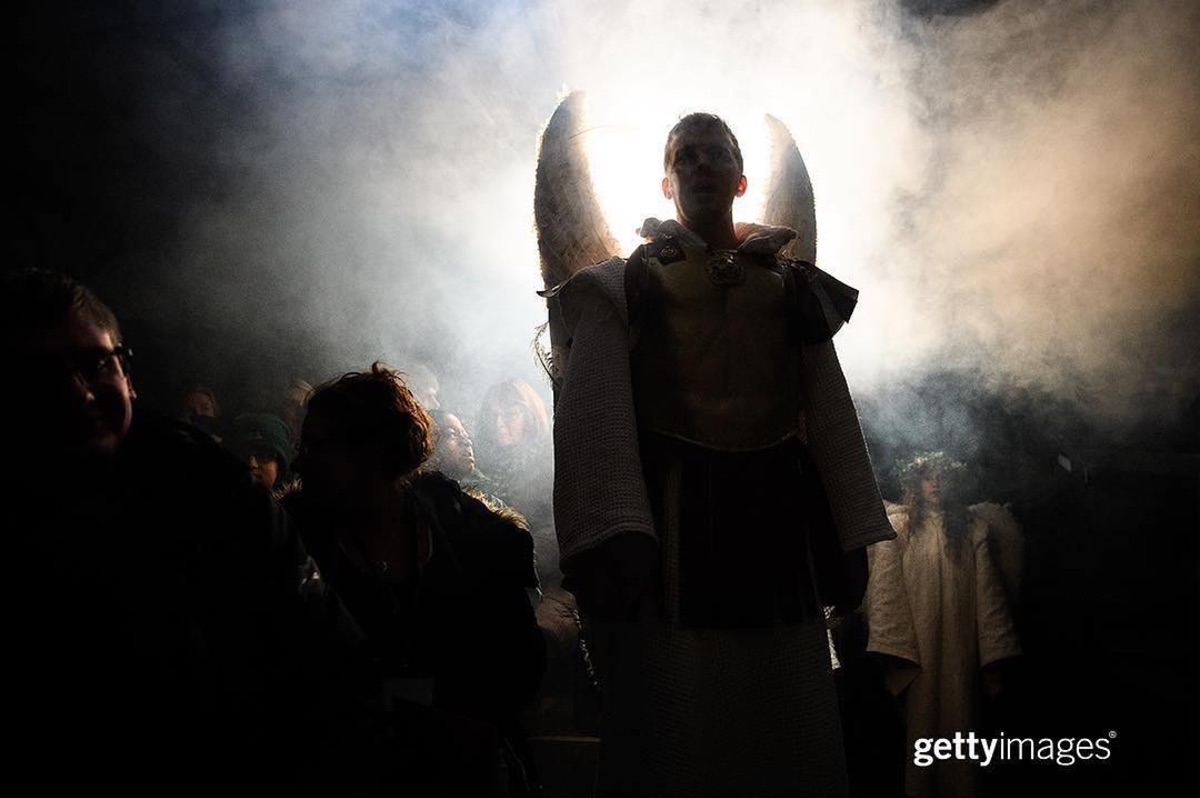Notes
On That Eerie Aleppo Photo Doubling Man and Child

It goes on – the war, the suffering, the displacement. The “fight for Aleppo is almost over” the headline announces, and we’re offered perhaps a moment’s reprieve before we read the kicker “but a new chapter of misery begins.” The Guardian’s photograph, shot by Ameer Alhalbi, perfectly encapsulates this narrative of continued suffering, but also acts as a witness, as a way to freeze the narrative in time, thus allowing us to actually step back and see all the elements of a frenetic image, to examine chaos, to solidify the inhabitants in record.
The most immediately noticeable feature of the picture is the eerie doubling of the man and child in the foreground – the figure just behind him is in an almost identical pose, in similar dress, and carrying an almost identical child. It is unclear if the infants are alive or dead, though they appear to be alive (the pose and the bright light suggest a Pietá on the one hand, and Madonna with child on the other – both scenarios are tragic, and in light of the continued atrocities by Assad and Putin, it is difficult to say which would be worse). Their remarkable resemblance to one another seems to tell us that, just as this scene plays out twice within the image, it is playing itself out all over Syria. Once one man leaves the frame, another will follow, and once there are no men left to exit the frame, there will be more Aleppos, more Syrias, identical in their suffering.
The men seem to be escaping towards us, the viewers, that is, towards our vantage of safety. But, of course, our vantage point on the image is removed temporally and spatially, and this escape will continue on past the photographer, past our point of view. Once they leave the view of the camera, “a new chapter of misery begins,” it remains to be seen whether the cameras will follow as well.
There are two more media references contained in the image – the satellite dish in the top center, and the man holding the camera in the third tier of people. We are reminded that the destruction of Aleppo (and indeed, all of Syria) has been broadcast for the world to see. This is not the first image we’ve received nor will it be the last. From the safety of our homes we have watched this torment, and, as the man with the camera reminds us, the most heart rending messages have not come from photographers recording the destruction but rather from the victims themselves as they record their final goodbyes as government forces close in around them. That this element has been inadvertently captured gives us a cruel meta-critique: even the parting messages are filtered through the media’s lens. We are necessarily separated by at least one medium, and however crushing the message, it will inevitably lose some power in transmission (our distance protects us both from physical harm as well as unbearable emotional harm).
The men carrying the infants might be the primary focus of the picture, but the most devastating part of the image is the child in red seen to the left of the men. If the men are walking towards (relative, temporary) safety as represented by the foreground, then we might take the background to mean the opposite, that is, as the street vanishes towards the back, so does life. In this sense, we can imagine the picture as a metaphorical tunnel out of Hades – the men are escaping, the others descend toward the vanishing point (both aesthetically and mortally speaking). They will not make it, the image seems to say. The child in red is walking towards death, but he gives us one last glance, implicating both photographer and viewer: “you have watched, and now the show is over.” The yawning abyss of the street imparts such a sense of doom that one gets the impression that if the escaping men were to look back, in a sort of Orphic move (if we can extend the Greek allusions a little further), they would be irrevocably lost, their children too. Flight is life, to stay is to die.
Finally, we must ask, where are the women? Have they left? Have they died? There is one woman in the photo, located in the top right, blending with the gray walls. Spectral, she seems to be watching the two men walk away, perhaps abandoned, perhaps unwilling or unable to leave. I do not know what to think about the lack of women in the photograph other than to say that it makes the image somehow even more tragic. In the absence of women, there is a heightened desperation to the men – in the absence of women, there is no future. The frantic motion of the photo (particularly in the middle ground) becomes the last, hopeless motions of a caged animal. The women and the children have left or are leaving – why do the men stay? What do they fight for, the city has fallen. And if they are to die, as the image seems to suggest, will that lone woman stay there bearing witness once the cameras inevitably leave.
This photograph does not tell us anything that we do not already know, but it provides us with a narrative of the destruction of Aleppo and the suffering to come. In a recent article on the ethics of photographing migrant crises, Magnum Photos offers this strikingly prescient line (for the purposes of the photograph at hand, at least):
(T)he still photograph is a pause point. It presents a moment to stop and consider. The people in the photograph cannot walk out of shot, out of focus and out of the viewers mind, but are preserved in a visual document.
We know that the two men with the children will leave the frame, but we do not know where they are headed, nor do we know whether they will survive. We do know, however, that well after they have left the frame, and well after the remaining figures in the picture have been replaced by corpses or government forces, this image will be there to remind us that people once lived in Aleppo, and at least two, perhaps, hopefully, escaped.
— Jake Romm
Photo: Ameer Alhalbi/AFP/Getty Images. Caption: Syrian men carrying babies make their way through a destroyed neighbourhood of Aleppo.


Reactions
Comments Powered by Disqus